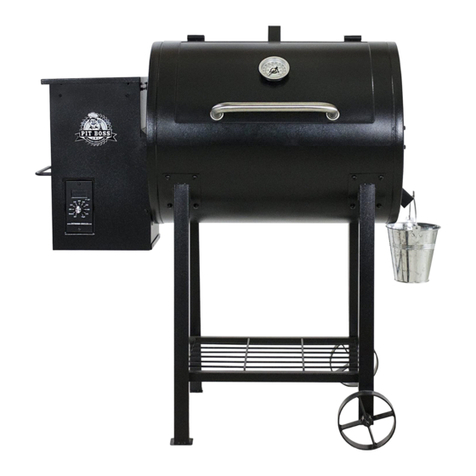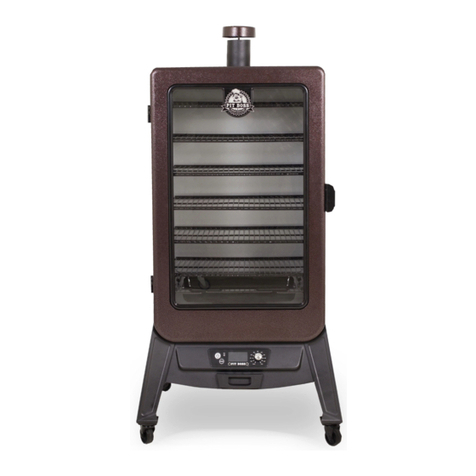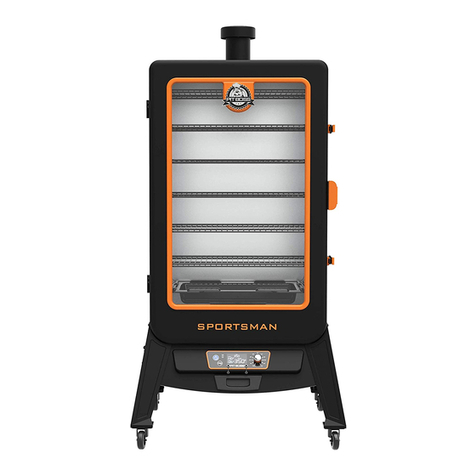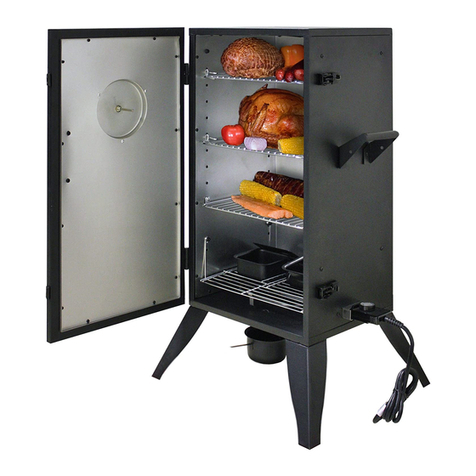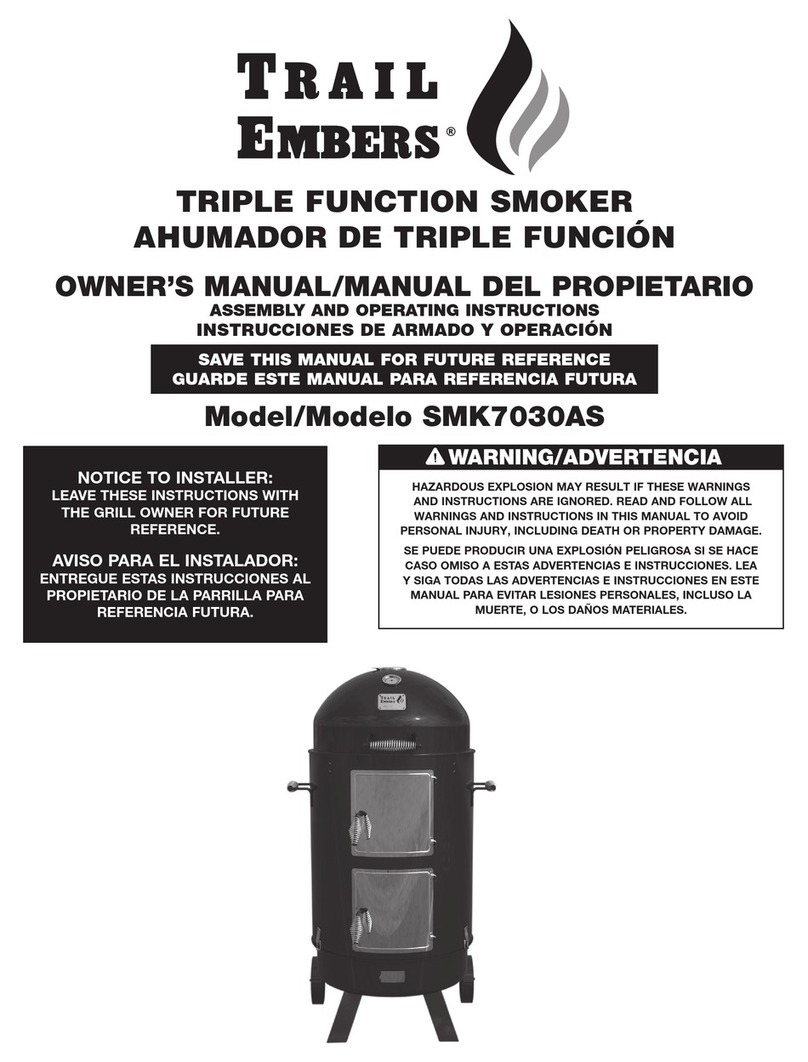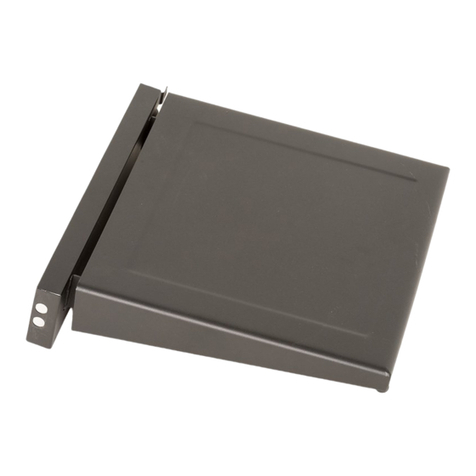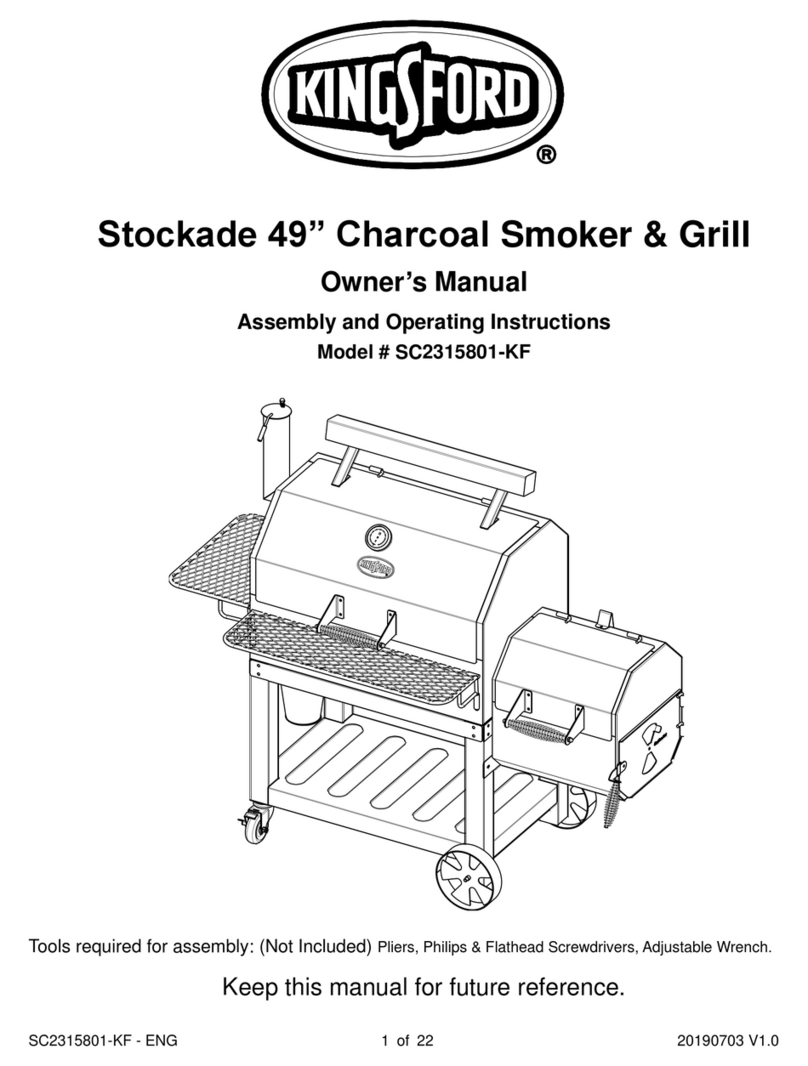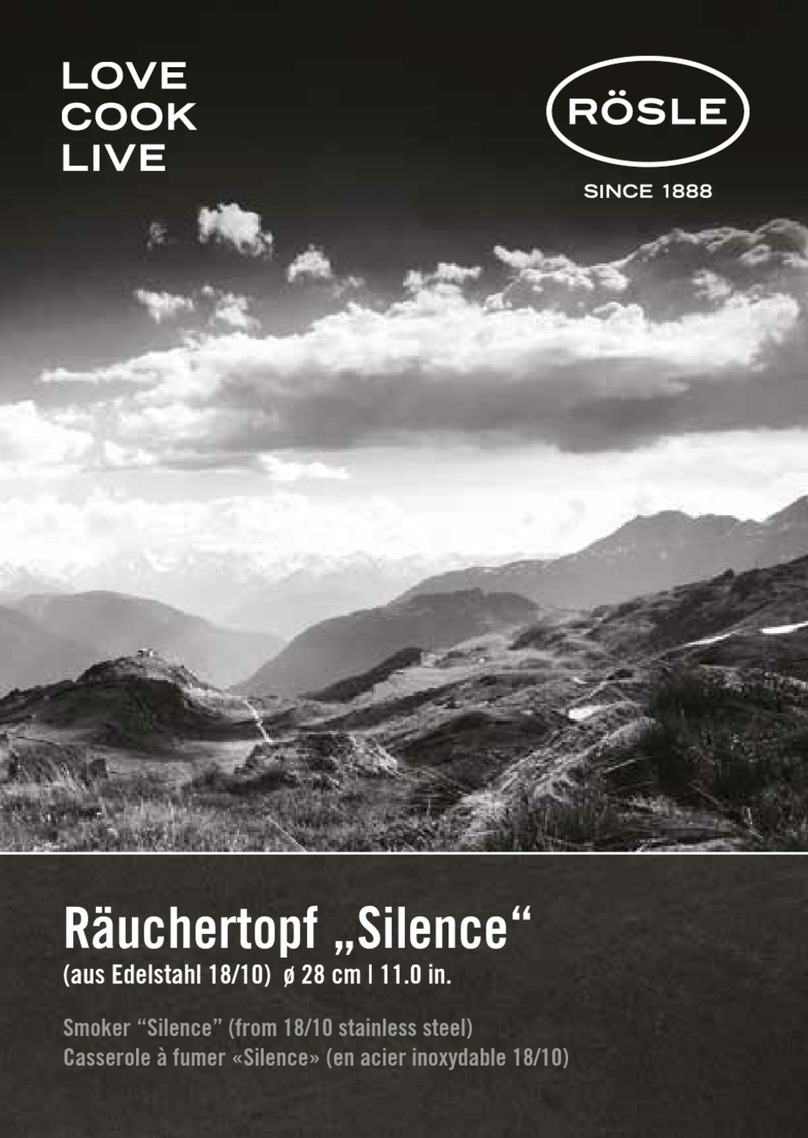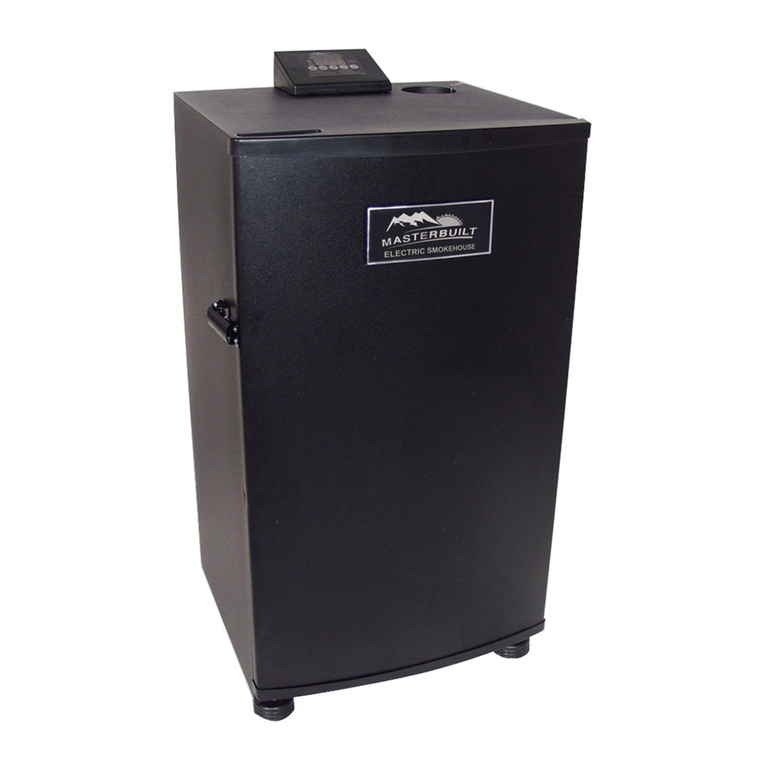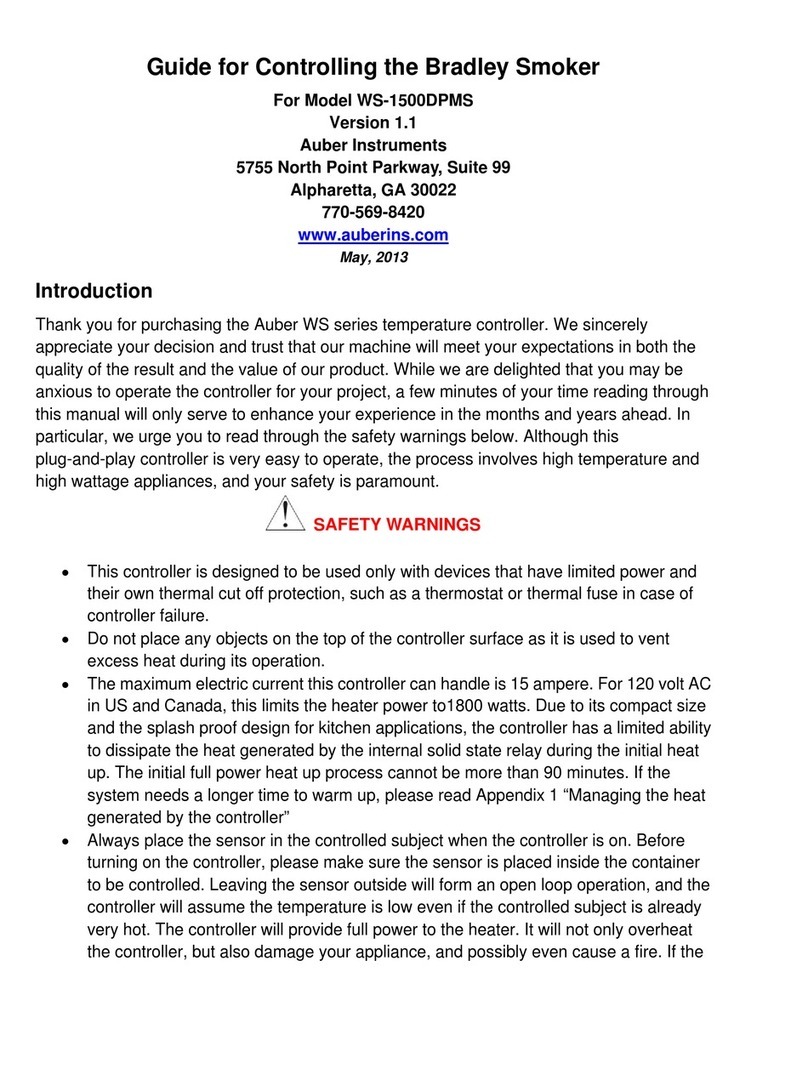
ENGLISH
3
6. Do not use this appliance as a heater, or for anything other than its intended purpose. This unit it not for commercial use.
DISPOSAL OF ASHES
Ashes should be placed in a metal container with a tight-fitting lid. The closed container of ashes should be placed on a non-
combustible floor or on the ground, well away from all combustible materials, pending final disposal. When ashes are disposed by
burial in soil, or otherwise locally dispersed, they should be retained in a closed container until all cinders have thoroughly cooled.
CREOSOTE
Creosote, or soot, is a tar-like substance produced when wood is burned. While burning, it produces black smoke with a residue
which is also black in color. When not removed, it can build to form a thick, hard coating of debris on any surface, posing a threat
to your appliance. It is dangerous to operate this appliance should the flame become very dark and sooty.
Should the creosote ignite, it makes an extremely hot and uncontrolled fire, similar to a grease fire. Should this happen, turn the
unit off, let it cool completely, then inspect for maintenance and cleaning. It commonly accumulates along exhaust areas, such as
a chimney, ventilation damper, or cabinet door.
If creosote has formed within the unit, allow the unit to warm up at a low temperature, turn off the appliance, then wipe away
any formation with a hand towel. Similar to tar, it is much easier to clean when warm, as it becomes liquid.
CARBON MONOXIDE (“ ”)
Burningwoodchipsgivesoffcarbonmonoxide,whichhasnoodorandcancausedeath.Donotburnwoodchips
inside homes, vehicles, tents, garages or any enclosed areas. Use only outdoors where it is well ventilated.
Carbon monoxide is a colorless, odorless, tasteless gas produced by burning gas, wood, propane, charcoal or other fuel. Carbon
monoxide reduces the blood’s ability to carry oxygen. Low blood oxygen levels can result in headaches, dizziness, weakness,
nausea, vomiting, sleepiness, confusion, loss of consciousness or death. Follow these guidelines to prevent this colorless, odorless
gas from poisoning you, your family, or others:
• See a doctor if you or others develop cold or flu-like symptoms while cooking or in the vicinity of the appliance. Carbon
monoxide poisoning, which can easily be mistaken for a cold or flu, is often detected too late.
• Alcohol consumption and drug use increase the effects of carbon monoxide poisoning.
Carbon monoxide is especially toxic to mother and child during pregnancy, infants, the elderly, smokers, and people with blood
or circulatory system problems, such as anemia, or heart disease.
SAFETY LISTING
In accordance with the procedures and specifications by Conformité Européenne (CE), Pit Boss Grills pellet
cooking appliances demonstrates compliance through testing to the standards and directives that comply
with all safety, health and environmental protection requirements by the EU (European Union) and the
European Economic Area (EEA).
This product meets Electromagnetic Compatibility (EMC, 2014/30/EU) standards, Low Voltage Directive (LVD,
2014/35/EU) standards, and is Restriction of Hazardous Substances (RoHS, 2011/65/EU, 2015/863) and Waste
from Electrical and Electronic Equipment (WEEE, 2002/96/EC) compliant.

